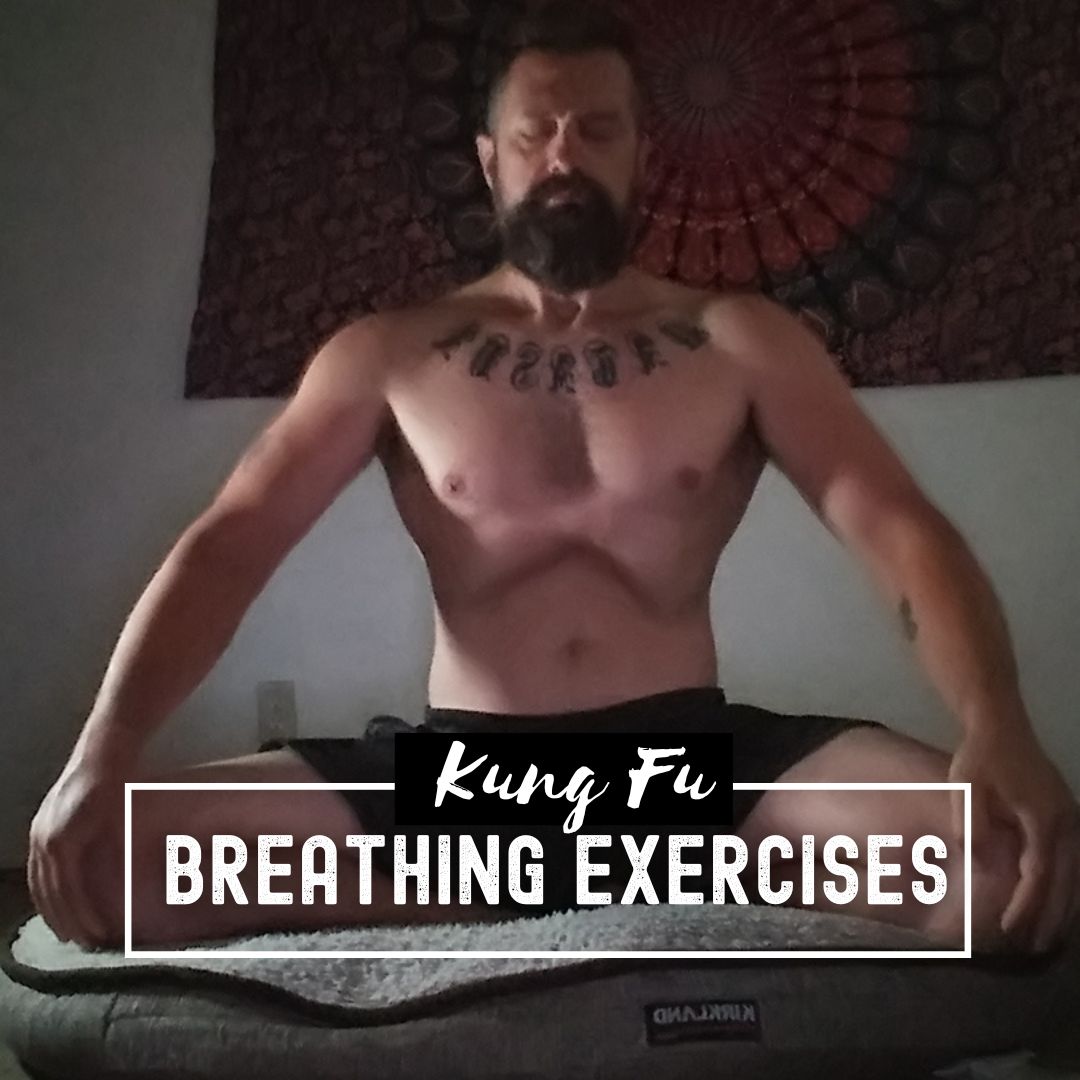
Breathing Life into Wellness: The Secret To Combating Stress & Insulin Resistance
In today’s fast-paced, high-pressure world, workplace stress has become an all-too-common problem, silently taking a toll on our health and well-being. With countless deadlines, demanding bosses, and ever-increasing expectations, it’s no wonder that millions of us find ourselves feeling overwhelmed and burned out. But did you know that this seemingly harmless stress can seriously affect our health? Recent research has uncovered a troubling link between workplace stress and metabolic disorders such as insulin resistance and type 2 diabetes.[1] The implications of this connection are far-reaching, affecting not only our professional lives but also our overall wellness.

Welcome to another installment of Fit-To-Fight, the series where we explore the intersection between ancient practices and modern science as part of a more natural way of living.
This series aims to help you experience your best physical and mental health by incorporating these practices into your life. We explore exciting topics that will get you thinking about your fitness and martial arts routine in a whole new way.
The Growing Problem of Workplace Stress and Its Health Consequences
“Why We Get Sick” by Dr. Ben Bikman explores the role of insulin resistance in various chronic diseases and illnesses. The book delves into the science behind insulin resistance and how it contributes to obesity, diabetes, Alzheimer’s disease, and even cancer.
In his book, Dr. Bikman presents compelling evidence that insulin resistance plays a crucial role in developing various chronic diseases. This concept is especially relevant when examining workplace stress, as the connection between stress and insulin resistance becomes increasingly clear.
Exploring the Connection: Insulin Resistance, Stress, and Chronic Diseases
Prolonged exposure to stress in the workplace can lead to a cascade of hormonal changes, including increased cortisol levels and disrupted insulin signaling. As a result, our bodies become less sensitive to insulin, setting the stage for insulin resistance and its associated health complications.
But what if our martial arts practice offered a solution, a way to combat the negative effects of workplace stress and safeguard our health? In this article, we’ll dive into the fascinating world of scientific research, exploring the ancient wisdom of the Old Masters and revealing a powerful yet simple technique that can help us manage stress and improve our metabolic health. So, stay with us as we unravel the secret to unlocking a healthier, more balanced life and discover the key to thriving in the face of workplace stress.
I know firsthand the pressures and challenges of dealing with workplace stress. Like you, I’ve felt the weight of deadlines, the frustration of unrealistic expectations, and the burden of trying to please everyone around me. There were times when the stress seemed insurmountable, leaving me feeling drained and defeated at the end of the day. I’ve been in your shoes and experienced the same emotional roller coaster that workplace stress can bring.
But along my journey, I’ve found that there is a way to break free from this vicious cycle and take back control of our lives. By tapping into the wisdom of the Old Masters, we can rise above the stress and emerge stronger, healthier, and more resilient than ever before. So, let’s embark on this journey together, discovering the key to unlocking a more balanced and fulfilling life amid the pressures and challenges of the modern workplace.
The Link Between Stress & Insulin Resistance
In the previous study, a group of researchers explored whether work-related stress could be linked to two major health issues, insulin resistance, and type 2 diabetes.
They gathered a large group of people from a community in Beijing, China, and kept an eye on them for a few years, from 2015 to 2021. To figure out how stressed these folks were at their jobs, they used a special questionnaire called the Copenhagen Psychosocial Questionnaire (or COPSOQ for short). They also measured the cortisol levels in their blood, which is like a “stress signal” in our bodies.
What they discovered was eye-opening: people with higher levels of work-related stress were more likely to develop insulin resistance and type 2 diabetes. In fact, this stress seemed to be an independent risk factor for these conditions. The more stressed people felt at work, the higher their chances of developing type 2 diabetes.
But how does this happen? The researchers found that when people feel stressed at work, their bodies release more cortisol, which in turn seems to increase the risk of developing type 2 diabetes.
Cortisol, often referred to as the “stress hormone,” is not inherently the enemy; our bodies rely on it in the right amounts and at the right times to maintain homeostasis. Optimal health and wellness depend on the natural ebb and flow of hormones, like the balance of yin and yang. This balance allows us to adapt and maintain a state of health and natural harmony. However, this delicate harmony is disrupted when cortisol levels become chronically elevated, leading to various health issues.
Unlocking Ancient Wisdom: Martial Arts and the Path to Stress Management
But how can we effectively manage stress in today’s fast-paced world? One answer lies in the wisdom of the Old Masters.
The wisdom of the Old Masters has stood the test of time. As martial artists, they unlocked the secrets to power and longevity through their deep understanding of the breath. Today, modern science is validating the profound insights of these ancient practitioners.
Controlled breathing, also known as breathwork or voluntarily managing how we breathe, is an ancient and highly effective method for quickly reducing and managing high-stress levels (and impacting our body’s ability to use insulin). Breathing techniques have instant effects on our body, such as influencing HRV (our heart rate‘s natural fluctuations, a sign of good health) and calming the activity of brain cells in a region called the amygdala, which is responsible for processing emotions like stress and anxiety.
The Most Effective Stress Management Tool
In their paper titled “Voluntary Control of Respiration Patterns,” published in A Clinical Guide to the Treatment of the Human Stress Response, the authors open with the following powerful and conclusive statement “Controlled respiration (breathwork) is one of the oldest and certainly the single, most efficient acute intervention for the mitigation and treatment of excessive stress.” [2]
Practices like pranayama and qigong meditation have been found to reduce test anxiety and stress reactivity. Controlled breathing can even be used to manage motion sickness and improve seizure control in people with refractory epilepsy.
A systematic review of breathing exercises revealed a moderate effect on glycemic control and insulin sensitivity in people with type 2 diabetes.[3] The mechanisms by which breath work improves glycemic control and insulin sensitivity may involve reduced oxidative stress, improved insulin signaling, and increased glucose uptake by muscles. Practicing breathing exercises can also improve mental health and reduce stress, which are important factors in managing diabetes.
Studies have found that practicing breathwork for as little as 15 minutes a day can improve blood sugar levels and insulin sensitivity in people with type 2 diabetes.
So, what’s the takeaway? It’s time to take a deep breath and embrace the power of our breath. By incorporating breathing exercises into our daily routine, we can effectively manage stress, improve metabolic health, and protect ourselves from the risks associated with chronic stress so common in our lives today.
How to Manage Stress with Breathing Techniques
In this section, we’ll explore three different breathing patterns that can help you manage stress effectively:
1. The Physiologic Sigh for managing stress in real-time:
- – Take a normal breath in through your nose, and then take a second, smaller breath in on top of the first one.
- – Exhale slowly through your mouth, releasing all the air in your lungs.
- Repeat this pattern 2-3 times to help alleviate stress in the moment.
2. 4:6 breathing (or 6 breaths per minute, 4 seconds in, 6 seconds out):
- Inhale slowly through your nose for 4 seconds, feeling your abdomen and chest expand.
- Exhale gently through your mouth for 6 seconds, allowing your abdomen and chest to contract.
- Continue this pattern for a few minutes, focusing on the rhythm of your breaths. Aim for a rate of 6 breaths per minute to help calm your mind and body.
3. Box Breathing
- Inhale slowly through your nose for a count of 3, feeling your abdomen and chest expand.
- Hold your breath for a count of 3, staying relaxed and present.
- Exhale gently through your mouth for a count of 3, allowing your abdomen and chest to contract.
- Hold your breath again for a count of 3, staying relaxed and present.
Continue this pattern for a few minutes, maintaining a rhythm that results in 5-6 breaths per minute. This technique can help bring balance to your mind and body during times of stress.
Remember to practice these breathing techniques regularly to become more familiar with them, making it easier to use them effectively when you need them most.
Breathing For Warriors
Box breathing has gained significant popularity among martial artists, thanks in part to Mark Divine, a retired Navy SEAL commander who brought attention to the technique through his experience in elite military training. This method of controlled breathing has proven to be especially valuable for those in high-stress and high-performance situations, like martial artists and Navy SEALs alike.
Martial artists often encounter intense physical and mental challenges during training and competitions. They must maintain focus, mental clarity, and emotional control while executing precise movements and techniques. Box breathing is an accessible and efficient tool that martial artists can use to calm their minds, enhance concentration, and regulate their nervous systems.
By practicing box breathing, martial artists can tap into a state of mental and physical balance that allows them to perform at their best. The technique’s emphasis on maintaining a steady rhythm and equal intervals for inhalation, breath holding, exhalation, and breath holding again mirrors the discipline and precision required in martial arts. Moreover, box breathing helps balance O2 and CO2 levels, providing a state of readiness in high-pressure situations. It’s a breathing pattern that helps to balance our state of readiness in a high-pressure situation, calming our mind and body yet keeping us feeling alert and focused, unlike some other breath work patterns that might make us too relaxed at a time when we still need to perform our best.
Conclusion
The prevalence of workplace stress has increased and has been linked to metabolic disorders such as insulin resistance and type 2 diabetes. Prolonged exposure to stress can cause hormonal changes, which contribute to insulin resistance and its associated health complications.
However, controlled breathing techniques passed down from the Old Masters have been validated by modern science as an effective method for reducing and managing high-stress levels and their impact on insulin resistance. Breathing techniques can influence HRV and calm brain cells responsible for processing stress and anxiety, resulting in improvements in blood sugar levels and insulin sensitivity in people with type 2 diabetes.
Incorporating breathing exercises such as the Physiologic Sigh, 4:6 Breathing, and Box Breathing into our daily routine can help manage stress, improve metabolic health, and protect ourselves from the risks associated with chronic stress.
Box breathing, in particular, can help maintain focus, mental clarity, and emotional control while executing precise movements and techniques, making it useful for martial artists and those in high-stress situations.
However, it’s important to acknowledge that breathwork cannot singlehandedly overcome the negative effects of an unhealthy diet or serve as a substitute for medical treatment when necessary. A holistic approach, including maintaining a balanced diet, regular exercise, and seeking professional medical advice when needed, is crucial for achieving optimal health and effectively combating stress, insulin resistance, and type 2 diabetes.
Breathwork not only enhances our ability to manage workplace stress but also empowers us with greater personal agency in how we respond to various life situations. In the words of Stanford professor Andrew Huberman, thoughts and feelings don’t change behaviors; behaviors change thoughts and feelings. By cultivating this skill, we can navigate the ups and downs of life with more resilience and poise, ultimately creating a more balanced and fulfilling existence.
Get Fit To Fight

About the Author

Ashe Higgs, I Liq Chuan Master Instructor & L2 Nutrition Coach
Ashe is a highly skilled martial arts instructor and certified nutrition coach with over two decades of experience in the field. He holds a Master Instructor certification in I Liq Chuan under Sam FS Chin, making him one of only several individuals worldwide to hold the title. He has taught classes and workshops worldwide and is passionate about helping others achieve their fitness and wellness goals.
With a background in full-contact fighting and a Level 2 certification from Precision Nutrition in nutrition coaching, Ashe is a well-rounded expert in the fields of martial arts. In addition to his expertise, he has a wealth of experience in teaching and mentoring others. He has a natural ability to connect with his students and inspire them to reach their full potential.
Disclaimers & Conflicts of Interest
I am not a doctor, and the information provided should not be considered medical advice. The information provided is for educational and informational purposes only and should not be used as a substitute for professional medical advice, diagnosis, or treatment. Consult your doctor or a qualified healthcare professional before making any changes to your diet, exercise routine, or lifestyle.
Please note that some of the links provided in this content may be affiliate links, meaning that I may receive a small commission if you purchase through them. However, please rest assured that any products or services recommended are based on my personal experience and belief in their value. I only recommend products or services that I have personally used and believe in.
References
- Chen, Ning, et al. “Occupational stress is associated with insulin resistance and incident type 2 diabetes: a prospective cohort study of functional community.” Clinica Chimica Acta (2023): 117356.
- Everly, Jr, George S., et al. “Voluntary control of respiration patterns.” A clinical guide to the treatment of the human stress response (2019): 315-329.
- Wilson, T., K. L. Kelly, and S. E. Baker. “Review: Can yoga breathing exercises improve glycemic response and insulin sensitivity.” J Yoga Phys Ther 7 (2017): 270.























